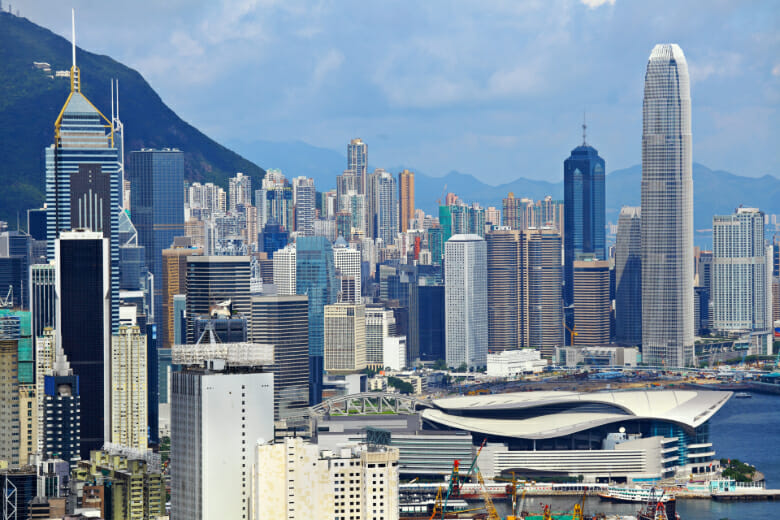
The Northern Metropolis is the gateway to the Greater Bay Area economy and the government can accelerate its success
While Hong Kong’s Northern Metropolis is a vital step towards diversifying and igniting Hong Kong’s economy, it has many facets and managing its realisation is a delicate task. When the plan was outlined during last year’s Policy Address by chief executive Carrie Lam, it garnered intense interest from stakeholders. The government should capitalise on this and partner with the private sector to power ahead.
Hong Kong’s northern region is less developed than the south, which bristles with skyscrapers and ambition. The north is where the Hong Kong Special Administrative Region’s boundary meets mainland China. The government has marked roughly 300 square kilometres of this area for a massive new initiative that has received broad approval from various sectors. And while Chief Executive Carrie Lam fired the starting gun during that Policy Address one year ago, the public was only given a broad vision of possibilities, leaving it hungry for details.
It is a physical connection point between Hong Kong’s economy and Shenzhen’s.
The project, which Lam now aims to have completed in 15 years, covers about a quarter of the SAR’s land and, most importantly, will ease the city’s severe housing crisis. It is a physical connection point between Hong Kong’s economy and Shenzhen’s, offering a gateway to the rest of the Greater Bay Area, and while the SAR’s economy concentrates on international finance in the south, the Northern Metropolis is about science, innovation and the future.
Space for Future Opportunities
The Northern Metropolis brings hundreds of thousands of employment opportunities spanning a greater variety of fields than are currently available in Hong Kong. The project also brings new asset classes and more opportunities to create popular assets, like data centres, cold storage, shops, and environmentally friendly solutions. Significantly, the Northern Metropolis also has space for developing future opportunities which may not yet be apparent.

Colliers managing director for Hong Kong, CK Lau
There are several areas where the government can enhance its strategy to get the best out of this unique opportunity and make the most of what it can deliver.
The very bones upon which the Northern Metropolis is planned, is transport.
The key, the very bones upon which the Northern Metropolis is planned, is transport, particularly the five new train routes that together will link Hong Kong’s Central area to Shenzhen.
Traditionally, governments hesitate to invest in railways because, while they appreciate the time-cost saving for passengers, they think the only ROI would be by means of fares, which may not be profitable, especially as many are subsidised. Railway lines’ latent potential must be considered to shrug off their reputation as loss-making necessities.
Railways bring wealth to underdeveloped areas by boosting the value of the land they transit, particularly the area around stations with the resultant burst of development, including residences, retail and industrial space. The moment investors hear about plans for a new MTR station, property prices in that area rise. The new residents’ need for shops, places of work, and entertainment ensure new lines are a good investment. The government can recover its original spending if not more because the plot ratio of land increases when infrastructure is in place.
To ensure an efficient project which serves the community, the Northern Metropolis should happen in phases, almost organically, rather than attempting to develop all of it synchronously. We already have mature New Towns and nascent New Development Areas that need better infrastructure to capitalise on their potential.
The lack of a streamlined process for land vetting and approval have seen severe delays.
The government must capitalise on the instant, deep interest from the private sector by expediting its promises so that the private sector can develop the land it holds or that land should be resumed and tendered again as quickly as possible.
Concrete Steps
The lack of a streamlined process for land vetting and approval have led to severe delays in development application approvals and a general sense that the various government departments have inadequate direction about how they should proceed. To be clear, this is not a new issue but needs tackling to get the ball rolling. The government needs to keep its promise about cutting red tape and easing restrictions, including policies on land use, as soon as possible.
Furthermore, once developers know the general plan, they should be allowed to develop their brownfield or agricultural sites to support or even lead the organic growth of the area. That HK$100 billion has already been set aside in the budget to pave the way for infrastructure is an excellent sign of intent, yet since being mentioned in the last Budget Speech, further details on spending plans have yet to emerge.
There is no doubt about the government’s intentions regarding the San Tin Technopole – it should be Hong Kong’s answer to Silicon Valley. We have heard that to render more support, the government is considering offering the land there at less than market premiums. The authorities may also want to involve the private sector in the Technopole sooner rather than later in order to help the project reach its critical mass and power its success.
The Northern Metropolis vision will help alleviate Hong Kong’s ongoing housing crisis. Including developments in New Development Areas and more mature towns, it would add more than 900,000 new homes and foster cutting-edge design and technology to carry this corner of Asia well into the future. Stakeholders want to get started. With its wealth of expertise, private sector involvement should be welcomed as necessary support for bringing the project to fruition. Prioritising construction of railway lines will go a long way toward building a solid base on which the Northern Metropolis will flourish.
Leave a Reply